Service Projects
Environmental Club Service Project Days
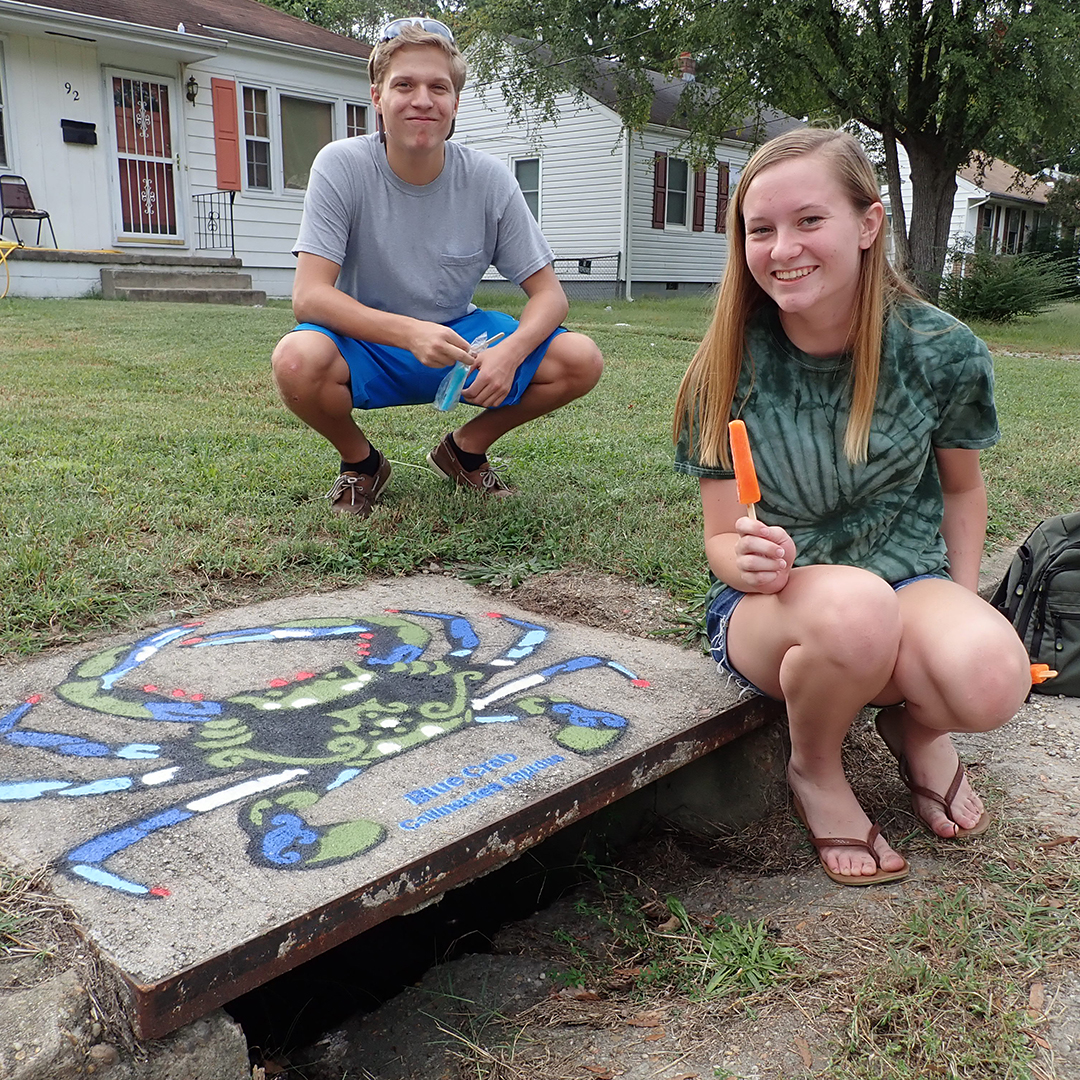
Independent Service Project Ideas
Here are a few service project idea to help guide your service groups through community service projects.
Water Monitoring
 Of the 16,647 miles of river and estuary assessed, 67% were impaired as reported by the Virginia Dept. of Environmental Quality.
Of the 16,647 miles of river and estuary assessed, 67% were impaired as reported by the Virginia Dept. of Environmental Quality.
- Citizen monitors played a major role in allowing this many miles of stream and estuaries to be monitored.
- Scout troops are able to find a stream or river that they would like be a part of protecting and can do so by being a part of a team of citizen monitors.
- We offer Water Quality monitoring training every spring for volunteers to take samples from Memorial Day to Labor day.
- If your body of water is not listed contact us about inclusion into our list.
- For more information check out our Water Quality Monitoring Section.
Rain Barrels
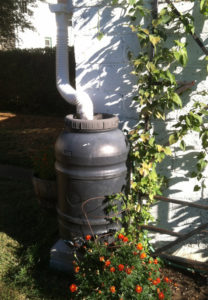 A rain barrel is a container that collects rain water from rooftops (this is called stormwater runoff).
A rain barrel is a container that collects rain water from rooftops (this is called stormwater runoff).
- Rain barrels come in several different shapes and sizes, but they all do the same thing: they save water and decrease stormwater runoff.
- Placed at the base of a downspout, a typical rain barrel can hold 55-75 gallons of water at one time.
- When connected to a watering hose, a rain barrel can hold a water supply for watering gardens, trees, and even indoor plants.
- How to Build a Rain Barrel for Your Home
Information Kiosk
Provide pertinent information of the area such as:
- Possible species index of plants, mammals, birds and invertebrates (i.e. Dragonflies)
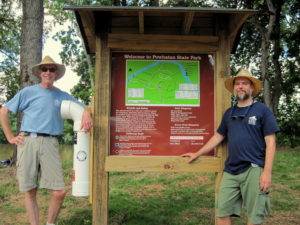
- A list of native species found in the area as well as photos to help identify the species.
- The scout can focus on plants and give a detailed description of the plant community.
- Or the scout can choose to generalize and give a basic description of all native organisms in the area.
- A scout can document invasive species in the area and alert the public through the kiosk that these species are invasive and should be controlled and not spread.
Cleanups
These activities should be coordinated through local organizations such as watershed groups, soil & water conservation districts, park systems etc.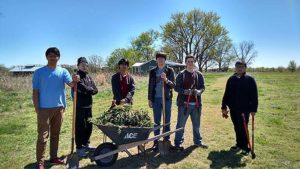
Trash pick-ups are always needed along:
- Roadside
- Riverside
- Streamside and in and among wetlands
Biological Cleanups
Scouts can pick an area that is experiencing problems with an invasive plant species and choose to survey and pull the invasive plants. The scouts should not use herbicide for this task due to herbicides negative effects on the health of nearby streams. For more information about invasive plant species check out our Watershed Restoration Program.
Storm Drain Labels
Virginia Department of Conservation and Recrea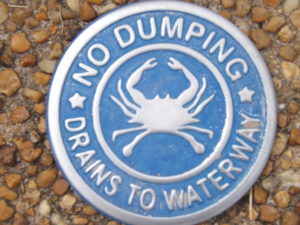 tion (DCR) will provide any individual with stencils and painting materials in order to spray logos beside storm drains so that citizens know “Do Not Dump – Drains To River/Stream/Bay.”
tion (DCR) will provide any individual with stencils and painting materials in order to spray logos beside storm drains so that citizens know “Do Not Dump – Drains To River/Stream/Bay.”
Plantings
Living Shorelines/Erosion Prevention
This is generally thought of as a fairly involved service project that may be suitable for an Eagle Scout project or an entire troop project.
- Living Shorelines provides much needed erosion protection for the tidal James River and its tributaries.
- Living Shorelines are plantings of native habitat specific vegetation used to decrease erosion and wave energy while
providing crucial habitat for aquatic organisms. - Living Shorelines provide an opportunity for natural vegetation to absorb and dissipate the wave energy produced naturally by
wind across the James as well as wave energy from ships and barges that frequent the James’ deep channel up to Richmond. - When this wave energy is not properly dissipated, it can cause serious erosion problems increasing the already threatening
levels of sediment in the James River, as well as property loss. - Living Shorelines also provides a natural and aesthetically pleasing view of the River and its surroundings, as opposed to
the unattractive sea walls which are used to prevent erosion and which actually increase the wave energy in the River
Riparian Buffers/Erosion Prevention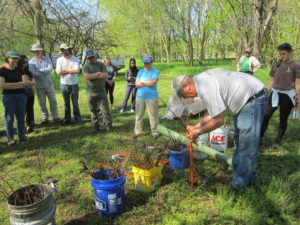
(Usually smaller scale than Living Shorelines, but neither one is size specific)
- Small streams and rivers (both tidal and non-tidal) can also experience erosion problems caused by increased sediment
load in the stream/river. - Native species can be planted in the riparian area of the stream/river in order to reduce the erosion in that particular
area.
Bayscapes
- Bayscaping focuses on the use of native plants, rather than introduced (ornamental) plants or grasses, as a way to reduce the amount of fertilizer, pesticides and herbicides needed to maintain a healthy lawn/garden.
- Bayscapes are essentially home gardens with plantings of native plant life. These native plants are less likely to need fertilizer, pesticides and herbicides due to their acclimatization with local conditions and the natural defenses these plants have again native pests.
- Bayscapes also provide natural habitat for native animal species such as migrating birds, hummingbirds and butterflies.
- How to Landscape with Native Plants at Home
Rain gardens
- Rain gardens provide all of the privileges of Bayscaping with the added ability of reducing the amount of runoff that leads directly into the stream/river.
- With increased urbanization we get increased percentage of impervious surfaces. Where the impervious surfaces are now, there used to be soil and plants to soak-up rainwater when it fell. Now with large amounts of impervious surface in an urban area, rainwater drains quickly into the nearest stream and can cause flooding and stream bank erosion (This is what happened when Hurricane Katrina hit New Orleans. Impervious surfaces have covered up vital wetlands and caused extensive flooding. It’s exactly the same concept.)
- Rain gardens are a planting of native plants able to take-up large amounts of water, in a depression made in the ground so as to retain as much water a possible before it runs off into the nearest stream.
- Rain gardens are generally placed below storm drains and built so that the water that drains from the storm drain is directed into the rain garden and is then used by the plants.
- How to Build a Rain Garden at Your Home
Composting
Composting is the process of taking scraps of food and leaves through decomposition and using the resulting soil-like material as an addition to landscapes and gardens. Compost is often used to improve the texture, water-retaining capacity, and aeration of soil. Annually, composters recycle between 600 to 750 pounds of matter that would otherwise have gone to the landfill. Imagine how much space we could save if everyone who had access to a small piece of land could compost matter from their households! For more information on how to begin your own compost visit www.oldgrowth.org/compost and www.mastercomposter.com.
Trail Improvements
Trails in James River Park or any park within the James River watershed may be in 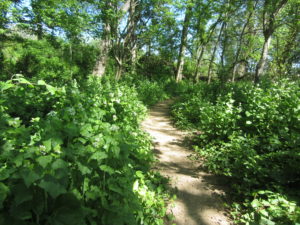 need of trail repair in order to ensure that erosion problems are not incurring due the presence of hiking trails as well as for aesthetic reasons.
need of trail repair in order to ensure that erosion problems are not incurring due the presence of hiking trails as well as for aesthetic reasons.
